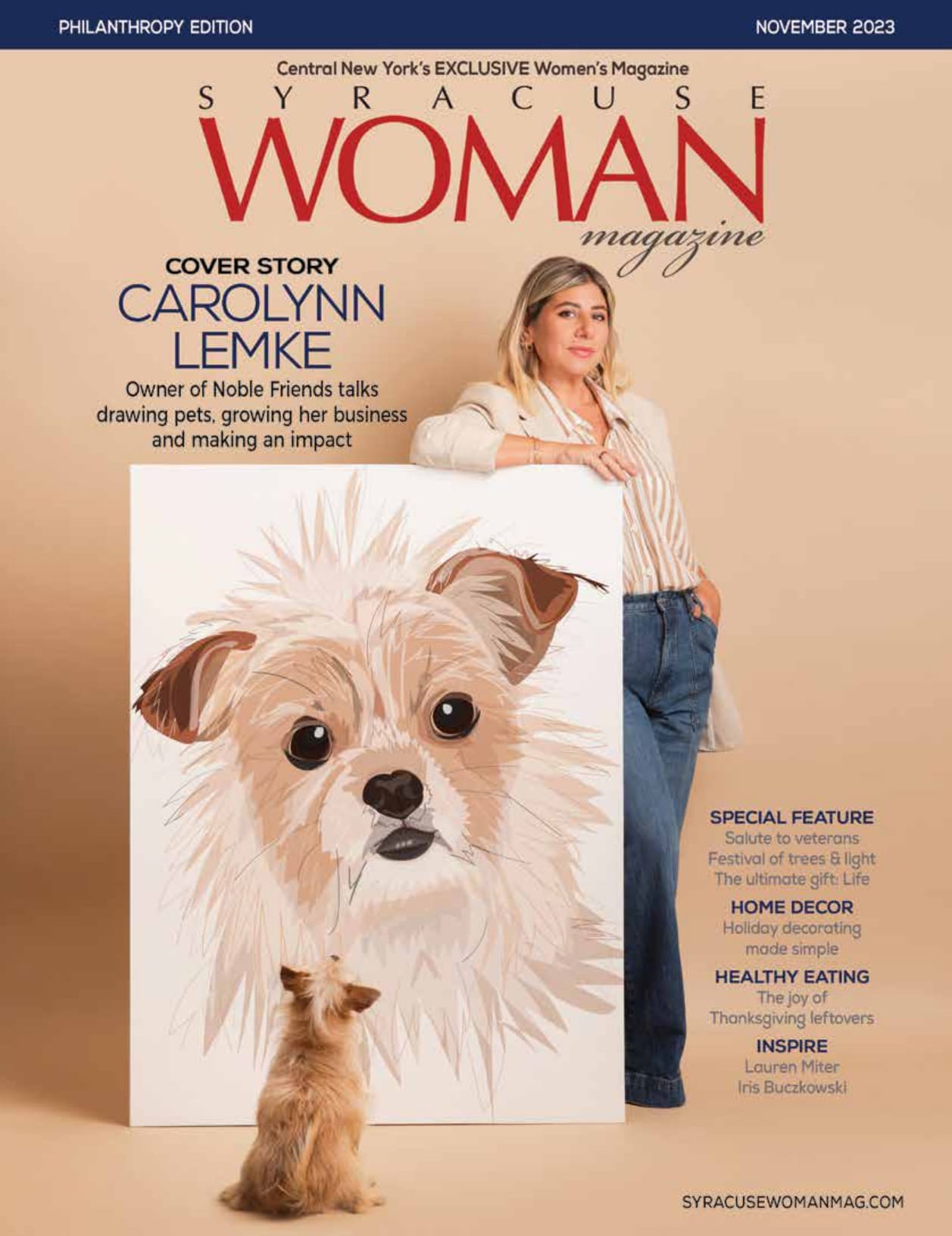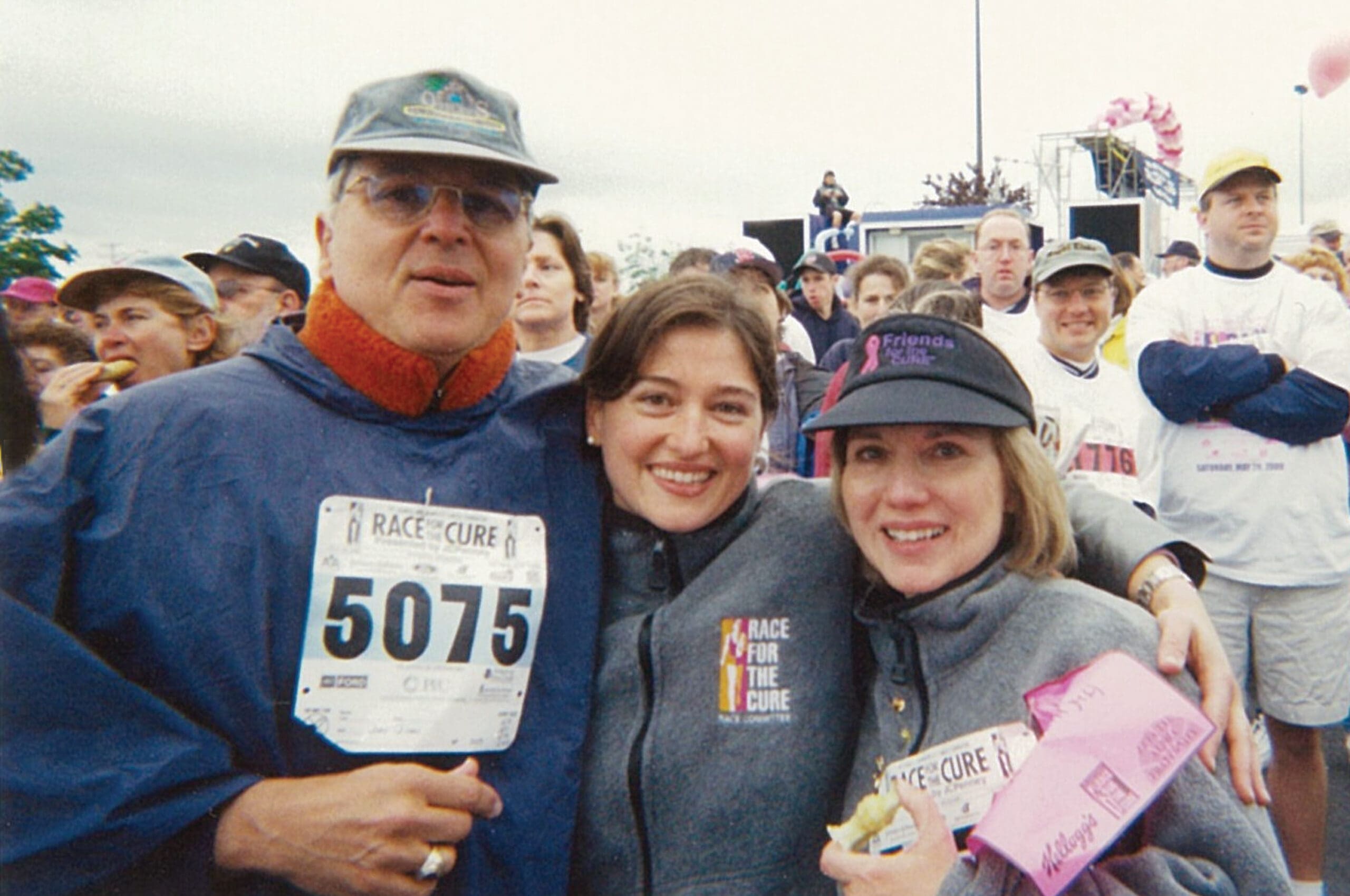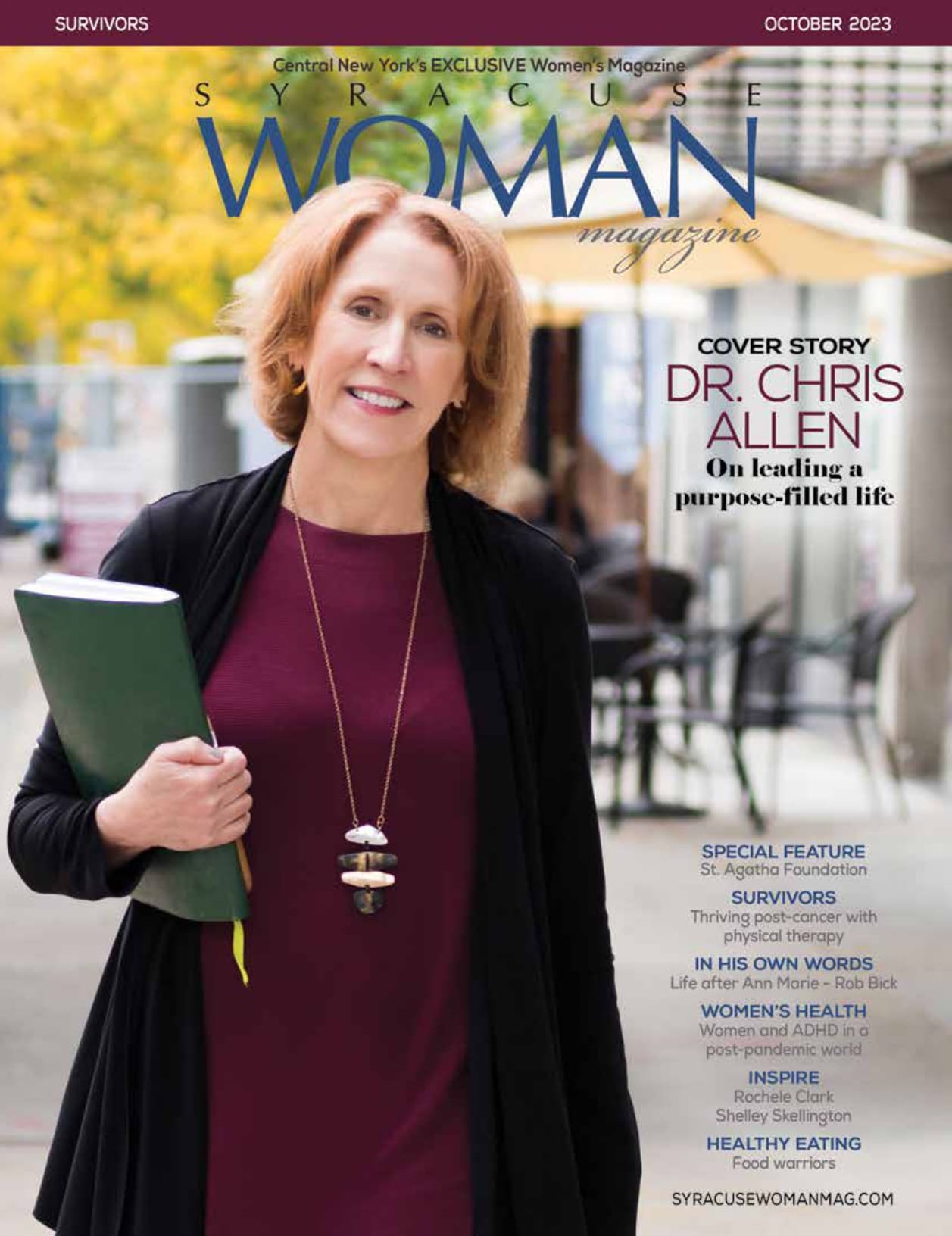By Jamie Jenson
Photos by Alice G. Patterson
Like most tattoos, the one on Tafiea Stokes’ right wrist tells a story. The zig-zag lines of a heartbeat surround the cursive script that spells out the name of her 3-year-old son, Tyson.
“We couldn’t decide on a name, but we [Stokes and her husband] are both big into UFC and fighting and boxing,” Tafiea laughed, “so we settled on Tyson.”
The boxing theme runs throughout the tattoo. At the very bottom is a blue butterfly.
“Muhammad Ali,” she smiled. “Float like a butterfly.”
It’s the boxing gloves in the middle of the tattoo, situated just below Tyson’s name, the hovering butterfly nearly touching the wrists of the gloves, that stand out the most. They are yellow, of course, to represent the invisible disease that has wreaked both physical and emotional havoc on Tafiea since she was a young woman.
“The boxing gloves represent my fight with endometriosis and how I remain strong. I’m still fighting through it,” Tafiea explained.
According to the Endometriosis Foundation of America, an estimated 200 million women worldwide and 1 in 10 women in the United States are affected by endometriosis. The disease occurs when tissue that’s similar to the lining of a woman’s uterus, called the endometrium, starts to grow outside of the uterus, typically on the ovaries and fallopian tubes or, though rare, outside of the pelvic organs. Just as the uterine lining sheds itself every month, the tissue also breaks down and bleeds. Instead of exiting the body, however, the tissue is trapped and can become irritated. Over time, scar tissue develops, which can cause pelvic tissues and organs to adhere to each other.
Endometriosis often causes debilitating pain and excessive bleeding during menstruation, but because it can occur when a woman gets her period for the first time, those who suffer often do not realize that their pain is abnormal. Because of this, many women are not diagnosed with endometriosis until they’re older and suffering from another devastating symptom of the disease: infertility.
This is exactly what happened to Tafiea, she said.
“I didn’t know anything was wrong,” she said. “I just knew at 14, I was staying home from school because of my period, and I thought that was normal. Everybody thought it was normal. No one ever said anything to me until I was 17, when the school nurse finally said, ‘Something is wrong. This isn’t normal. You need to go to your doctor.’”
Tafiea went to the doctor, but because the only way to get an official diagnosis of endometriosis is through invasive surgery, Tafiea opted to wait until she was older. Always the fighter, she learned how to work through the pain, especially during the years she was studying to become a nurse.
Her fighting spirit only grew when Tafiea, who is now a primary care nurse practitioner at St. Joe’s, and her husband, Jesse, could not get pregnant.
Tafiea went to a doctor for an ultrasound. The doctor told Tafiea she would never be able to conceive because her fallopian tubes were completely blocked with fluid. Tafiea just kept on fighting.
“I stayed positive. I did a lot of research and my husband was there to help do some research,” she said. “We were doing holistic therapies. We did acupuncture. Cupping. Massage therapy. We went on diets and lost weight. We remained positive, but we were scared. Definitely scared.”
Tafiea and Jesse also made an appointment with Dr. Robert Kiltz at CNY Fertility Center.
“Dr. Kiltz was like a miracle worker,” Tafiea said. “I went there with some research that I had done and with the test that I wanted done, and he was agreeable to do the testing when I went there.”
After taking a Hysterosalpingography, or HSG, x-ray of Tafiea’s reproductive organs, Dr. Klitz found that Tafiea’s fallopian tubes weren’t blocked at all. In September 2014, Dr. Klitz recommended laproscopy in order to have a better idea as to why Tafiea couldn’t get pregnant.
The laproscopy revealed that Tafiea was suffering from stage four endometriosis, the most severe stage of the disease.
Tafiea’s endometriosis was not contained to her reproductive organs; her bladder, diaphragm, and bowel were also affected. Dr. Klitz used a laser to remove as much of the tissue as he could.
After three unsuccessful rounds of interuterine insemination, Tafiea and Jesse opted to try in-vitro fertilization. One round of in-vitro and nine months later, they had Tyson.
Tafiea’s endometriosis journey did not end there, however. In fact, in some ways, it was just beginning. Thirteen months after having Tyson, Tafiea’s symptoms returned. The pain when the disease would flare was excruciating.
“After I stopped breastfeeding, everything came back like a ton of bricks,” Tafiea said. “I started getting hot flashes, dizziness. I was passing out and had brain fog.”
Other than suppressing your period with birth control, Tafiea said, there’s no real treatment for the disease.
“I got really, really depressed,” she remembered. “I was just fed up, but it was like something said, ‘Use this,’ and so that’s when I started researching how I could start a support group, and then the support group turned into starting the advocacy group.”
The fighter continued her fight.
Tafiea emailed the co-founder of the Worldwide EndoMarch, a global movement that’s fighting for changes to the ways in which endometriosis is both diagnosed and treated.
“I asked her how I could start, and she emailed me the supplies right away,” Tafiea said.
Within a week, Tafiea had created a Syracuse chapter of EndoMarch. In order to spread the word, Tafiea did an interview with local news and radio stations. Women started reaching out to her to tell her their stories of the disease. The Syracuse chapter grew quickly.
The group wasted no time trying to raise awareness of endometriosis. They held a Tattoos for Warriors fundraiser, where people fighting the disease got endometriosis-related tattoos. Jesse, whom Tafiea calls her backbone, got a tattoo of a tattered yellow endometriosis ribbon in honor of his wife’s fight.
Tafiea said it’s important to her to create a space where women who are suffering with endometriosis can be heard.
“My plan is to be a voice that hopefully causes an echo of women to come out and tell their stories, too,” she said. “I was, for the longest time, very ashamed to talk about it. I felt ‘less than.’ I felt less than a wife, less than a woman, and I wasn’t able to conceive naturally. I just felt ‘less than.’”
The best part about creating the group, Tafiea said, was the sense of sisterhood it’s created.
“There are a few of the girls I can communicate with whenever I’m going through a flare-up or the depression comes back because they understand because they’re going through the same thing,” she said.
Tafiea still wasn’t done, though. In order to bring more awareness to Syracuse, she knew she was going to have to reach one person in particular: Mayor Ben Walsh. Tafiea said after seeing an events notification for the 2019 Mayor’s Ball, she knew what she was going to do.
“I said, ‘Oh! Now this is an opportunity!’” Tafiea laughed. “So, I went to the Mayor’s Ball with my best friend with a plan to bump into the mayor with my card in hand to get a meeting with him, and that’s exactly what I did. My husband said, ‘You’d better not come home without any results!’”
Tafiea waited for an opportunity to introduce herself to Mayor Walsh. When he stood to get some food, she approached him and asked if she could schedule a meeting.
Within two weeks, she had her meeting, and at the end of it, he made a proclamation for Tafiea and her group, declaring March Endometriosis Month in Syracuse.
Tafiea wants to educate the public on the disease because it’s rarely discussed. She said she doesn’t even remember learning about endometriosis when she was studying to be a nurse practitioner, that she thinks there may have been one slide that discussed it during a lecture.
“Because there’s a lack of education about endometriosis, a lot of people don’t know about it,” Tafiea said. “A lot of people downplay it—because right now, I’m having a flare, but I’m sitting here perfectly fine, so you wouldn’t know I’m in pain unless I told you. People kind of downplay what we go through and it’s frustrating because it’s an invisible illness but we’re dealing with it every day.”
Tafiea is starting to branch out with her advocacy, concentrating not only on endometriosis but on women’s health issues in general. She started a blog that she says is dedicated to empowering, celebrating, and uplifting women, and she posts educational videos in a series she calls “Teach It Tuesdays,” where she explores different health issues women may be experiencing.
Most recently, Tafiea self-published a book called Grow Through It about her struggle with endometriosis, from dealing with the pain since she was 14 years old to her infertility. She is looking forward to her book launch party, which is scheduled for Jan. 18.
Tafiea is determined to continue her fight against endometriosis and provide support for those who are suffering from the disease, and to offer them some advice.
“I want to tell them to not give up, to stay positive. Endo is tough, it definitely is, but there are 200 million endo sisters that you have that are in support of you and are here to help you, even with the fertility issues. Just don’t give up. It can be frustrating and it can get you down, but just keep pushing and stay strong,” she said.
“And always get a second, a third, a fourth — get as many opinions as you need to feel comfortable! Don’t just settle. If you’re not comfortable with what one person is saying, definitely get a second opinion.”





